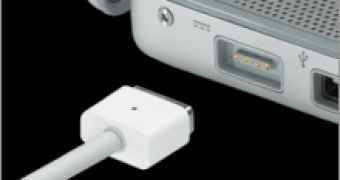Any Mac owner should know what to do if his/her computer refuses to turn on. Whenever you face such a situation you don’t have to give up and take your Mac to the nearest Apple Store immediately because there a number of steps that you can take to prevent yourself being embarassed.
Although some tend to let others solve their problems, there are other Mac users that want to know how to take care of their computer on their own. If you are such a person you should read the Apple support article describing this problem or read this so you will know the exact things you have to check for when your Mac refuses to start up.
Check the power cable
First of all, you have to make sure that you Mac is connected to a working power outlet. You may want to plug any other electric device in the outlet to give it a try. If the device does not work try another outlet and, if that works, connect your Mac using its power chord. If your Mac still isn’t starting up try the next step.
Check the power port
The power port might be the reason why your Mac doesn’t turn on. Check if your power cord or power adapter is connected to your Mac’s power port on the back or left side of your computer (depending on your Mac computer).
Replace the power cord
If checking the power outlet did not yield any results you may want top try plugging another power cord (one that you know for sure it’s working) into your Mac’s power adapter. If the computer will start up, all you have to do know is to replace your old and deffective power cord.
Replace the power adapter
If you own a Mac that uses a power adapter to connect to the power outlet (a MacBook, MacBook Pro, iBooks, PowerBooks, Power Mac G4 Cube, or a Mac mini), borrow a working power adapter from one of your friends and try connecting it to your Mac. If your computer will now turn on you will have to replace your deffective power adapter and enjoy working on your Mac again.
Disconect all peripherals
If none of the above advices worked so far, you may want to disconnect all peripherals connected to your Mac to see if the problem is due to some accessory plugged into your computer. If your Mac will turn on you can plug in your peripherals one by one and restart your Mac to see which peripheral is the cause of your problems. Once you find the culprit you will have to replace to avoid any other future startup problems.
Reset the SMC, PMU, or PRAM
This is the final and most extreme step you will have to take to make sure you have tried anything in your powers to take your Mac back on its feet. To reset your Mac’s SMC, PMU, or PRAM you will have to follow the extensive instructions published by Apple on their support website.
Click on one of the following links to get to the instructions for your Mac model: MacBook or MacBook Pro, Mac Pro, iMac, iBook or PowerBook, Mac mini, Power Mac, and other Mac computers.
Get help from Apple
Once you tried all the steps above and you still haven’t succeeded to turn on your Mac, you will have to contact Apple’s technical support (1-800-APL-CARE in the U.S.A.) or take the computer to the nearest Apple Authorized Service Provider (AASP) or Apple Store for a comprehensive diagnosis.
If you want to take your Mac to an Apple Retail store, you will have to make an online reservation to a Genius Bar (only available in some countries).
If you have any other tips for the other readers or you know of any other method to solve start up issues for a Mac computer, share it with the rest of us in the comments. Also, if you have experience(d) similar problems and you cannot solve them on your own, leave us a word – we will get back to you with a solution or an advice.

 14 DAY TRIAL //
14 DAY TRIAL //